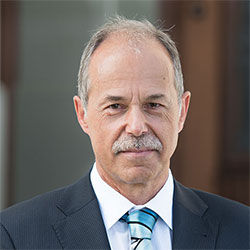


Urs Stalder

Official numbers summarising the market segment do not exist. Experts estimate the market volume for antimicrobial treated textiles at US$0.8 to US $1.2 billion dollar exchange rate. Major markets today are in the United States of America, Europe, Japan and South America. We have observed a growing interest in China and other Asian countries.
One should know that an antimicrobial treatment produces a wide range of different effects. Depending on the material, intended use and expected benefits, the effects can be intelligently combined. Sportswear and work clothing can be protected against bacteria and odours. With textiles worn close to the body, the result is a pleasant, fresh feeling and improved wearing comfort. In addition, mattresses and bedding can be treated against dust mite infestation and mildew growth. For outdoor textiles or architectural textiles such as awnings or other light management textiles, a protective function against mildew makes sense. This prevents deterioration of the material, the product remains functional longer and the desired aesthetic appearance is preserved for a longer period of time.
Each of the three segments contains products that acquire genuine added value due to the Sanitized antimicrobial treatment: In apparel these are sportswear and outdoor clothing, socks, underwear and work clothing. Mattresses, towels (especially for hotels) and carpets dominate the home textiles. And in the medical field they are mattresses, bedding as well as staff clothing. The Sanitized® hygiene function supports and supplements existing hygiene concepts effectively here. The demand for all segments is growing. And the demand from the manufacturers and customers for innovative technologies is skyrocketing. Sanitized is actively doing research and working closely together with the producing industry here.
Consumers are increasingly better informed - naturally also due to the Internet. They are actively looking for information about textiles with antimicrobial treatments, and they are looking for safety and requiring transparency in the entire textile production chain. For that reason, many of our customers are using the Sanitized Ingredient Brand in their marketing activities to underscore the superior value, reliability and quality of the built-in hygiene function. The number of our licensed partners who label their finished products with the Sanitized Quality Seal is steadily increasing. For the brand owners / textile manufacturers this means an appreciation of the value of a product and a way of distinguishing themselves from the competition. There are also growing markets in the United States of America and Europe.
Odour management is the major topic, especially for activewear. The conventional antimicrobial treatment prevents the growth of bacteria on the textile and thus prevents the development of unpleasant odours. The SANITIZED research is working on new, intelligent systems that prevent the absorption of body and environmental odours by the textile and thus guarantee lasting and complete freshness.
Asia is still the largest market for the treatment of textiles. To expand our activities further in this region, our affiliate will include China in its activities in 2015. Using a similar model, SANITIZED recently established a sister company in the USA. The customers in Asia appreciate Swiss quality, the excellent service package and the outstanding reputation of the Sanitized® Ingredient Brand.
Conscientious resource preservation is a deeply embedded concept at SANITIZED and has been practiced for many years. So we are working permanently on developing additives with a lower use concentration and, at the same time, a better performance. The reduction in the amount of additives used, packaging materials as well as the logistics volume are the positive consequences. SANITIZED has been a Bluesign system partner from the very start. The Bluesign system is the solution for a sustainable textile production. It eliminates harmful substances right from the beginning of the manufacturing process and sets and controls standards for an environmentally friendly and safe production. This not only ensures that the final textile product meets very stringent consumer safety requirements worldwide but also gives the consumer confidence that he is acquiring a sustainable product. Many products can be integrated into textile finishing processes so that no additional application process is necessary. This means energy and water savings. The greatest impact on the environment arises during the use of the textiles, during the frequent washing after wearing. This is where the Sanitized hygiene function unfolds its greatest effect. By avoiding unwanted odours, textile products need to be washed less frequently, and, furthermore, wash cycles at cooler temperatures are sufficient. Over the textiles' period of use, this leads to enormous savings of energy, water and detergents. The environmental profile of many of our products can be determined using the One Way calculator developed by Archroma.
The treatment is just as individual as the textile. About 50 washing cycles are usually required for sportswear textiles. This may rise to as many as 100 washings for bedding in the healthcare field. Archroma is a leading global provider of auxiliary textile agents and has been our distribution partner for many years. With a solid base of experience and extensive expertise Archroma is supporting the customers on site with specific formulations and application processes to meet their specifications - and increasing the durability of the treatment is also a part of this endeavour.
DISCLAIMER: All views and opinions expressed in this column are solely of the interviewee, and they do not reflect in any way the opinion of technicaltextile.net.